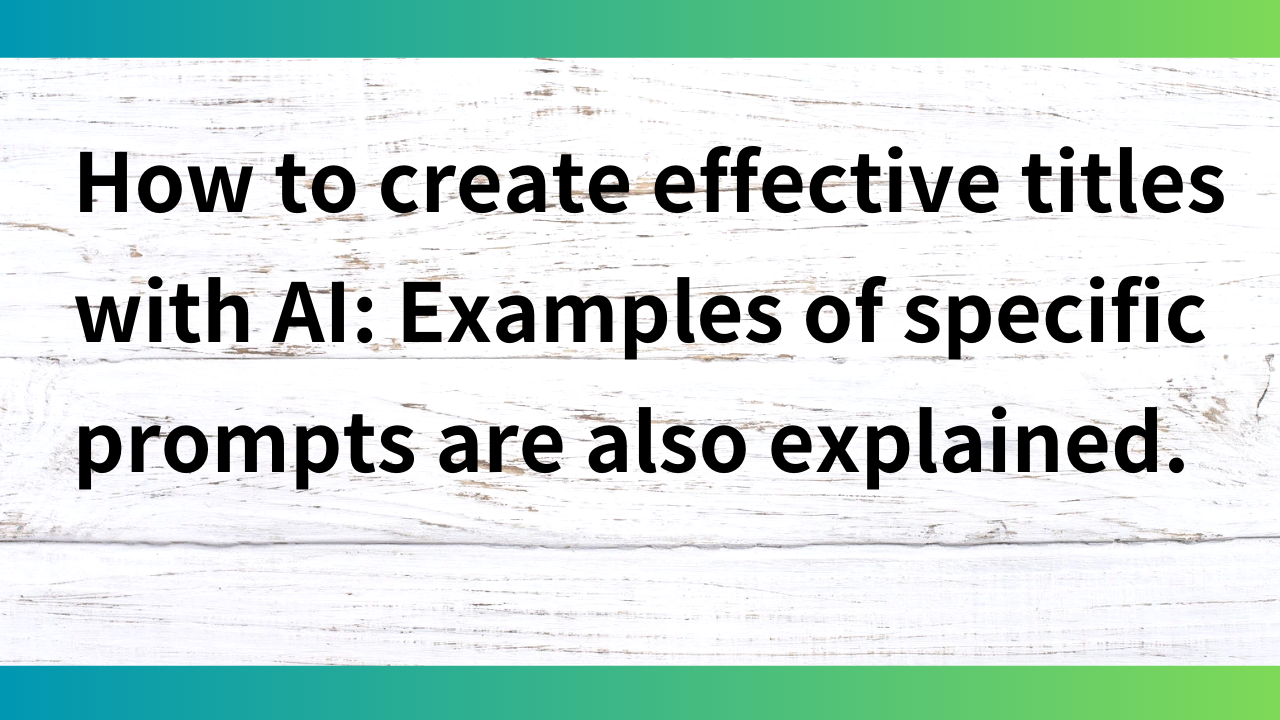Introduction.
AI technology is revolutionizing not only our daily lives, but also the field of content creation. One example is the automatic generation of attractive titles. Titles are a key element in the success of an article or campaign and are the first point that determines whether or not many readers will be interested.
This article will show you how to leverage AI to generate effective titles and provide specific prompt examples. By reading this, you will be able to learn and implement specific ways to use AI in content creation.
AI Title Generation Methodology
Use of machine learning models
At the core of AI-based title generation are machine learning models. In particular, deep learning models based on the Transformer architecture learn patterns from vast amounts of data and generate a variety of titles based on input text.
For example, by utilizing the T5 model, which is specialized for the Japanese language, it is possible to create titles that take into account the unique nuances of the Japanese language.
Keyword-based generation
Keyword-based title generation is one of the most important aspects of SEO. Many tools exist that allow you to enter specific keywords or topics and output effective title suggestions related to them.
A typical example is Ahrefs’ SEO Title Generator. For example, enter the keywords “remote work” and “efficiency” and it will automatically generate a title that is likely to be clicked on.
Template-based approach
Another effective approach is to use a preconfigured template. This approach generates titles based on a specific structure.
For example, GetGenie AI uses formats such as “[Solve] the Problem the [Numbers] Way” to generate titles that are likely to attract the reader’s interest.
Improvement through feedback loops
Another way to improve the quality of the generated titles is to reflect user feedback. This approach is also used by services such as Google Photos, where AI models continuously learn and optimize.
Examples of specific prompts
When utilizing AI to generate titles, it is important to set appropriate prompts. Below are some examples of prompts that are easy to utilize.
For business articles
‘Based on the following, please suggest five catchy titles for business articles. The content is ‘Remote Work Efficiency’. Titles should be no more than 30 words.”
For blog postings
‘Come up with an engaging title for a blog post on health that will attract readers. The theme is ‘easy home health tips’. Please keep the tone casual.”
For marketing campaigns
Create three attractive titles for a marketing campaign for a new skin care product. Target women in their 20’s and 30’s and make sure they are trendy.”
These prompts improve the accuracy and relevance of the AI-generated titles by clearly indicating the information and conditions required.
Interview AI automatically generates multiple title suggestions from the text
Interview AI, which transcribes a one-hour audio file in just 15 seconds and automatically converts it into a natural interview format, allows you to paste in the text and automatically generate multiple titles.
Titles and subheadings can be generated by specifying the number of subheadings to be generated. Subheadings are automatically inserted between the body text.

For more information on how to use Interview AI’s “automatic title and subheading generation” feature, please see this article.

summary
AI-based title generation is an efficient method of using natural language processing techniques. There are a variety of methods, including machine learning models, keyword-based generation, template use, and use of feedback loops. In addition, by devising specific prompt examples, it is possible to obtain titles that are appropriate for the target audience.
As a next step, we encourage you to try the prompts presented here. Use AI to create more and more attractive titles!


